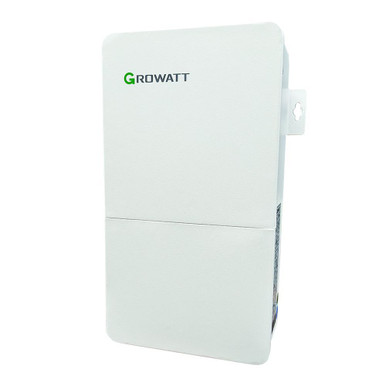Thanks for the pointer to an ebay option here. But I still have one question. I understand, the isolation transformer has safety features for old style non polarized radios and tv's. But I have non of these things and don't forsee any legacy non polarized equipment connected to solar. Is there some other reason you recommend an isolation transformer for 120v loads with a grid connected Growatt 5000 ES US?
The 240V inverters were designed for European 240V L/N power, not US 120/240V L1/N/L2. There are some long threads here about excessive current draw from the grid (attempting to rebalance, as Tim mentions) and various safety issues depending on what non-UL, non-NEC compliant attempt to use it.
I don't think any compliant way to use them was ever described, except that an isolation transformer appears to solve all the technical issues, leaving just "not UL listed".
SS does offer an auto-transformer for use with this (or similar?) model.
"Took some thinking to make a Neutral ground bound with the inverters being 240 Volt. But works well and a triple 20 Ampere breaker can make this a safe setup."
Apparently meaning that a breaker can protect the transformer from overload and simultaneously disconnect downstream 120V loads to protect them from damage caused by lost neutral.
Signature Solar provides solar panels, off-grid solar systems, grid-tie, and hybrid systems. Quality solar inverters, bifacial solar panels, complete solar kits, solar batteries. Featuring brands such as EG4 Electronics with their solar battery, LifePower4 and EG4 LLifePower4 and EG4 LL

signaturesolar.com
The proper solution is to select an inverter which supports split phase, possibly a pair of stackable 120V inverters.
If using a Chargeverter, you still need either a autotransformer or an isolation transformer to make a neutral for 120v loads, correct? Does the isolation transformer provide any additional benefit over the auto transformer in this case?
You keep taking me down wild and wonderful rabbit holes. Thanks for the ideas.
Chargeverter eliminates issue of autotransformer trying to rebalance grid, and you can properly bond the derived neutral to ground.
Autotransformers are often undersized, can't handle full power on a single 120V leg. If autotransformer disconnected by fuse or breaker, lost neutral can burn up 120V loads. Victron offers one with suitable protection, although I'm not convinced it can be safe and proper, without trying to rebalance grid when grid feeds through inverter.
If using isolation transformer, you are forced to get one large enough to transfer the power, and standard use of breakers protects it.
But like I wrote earlier, if you try to get an isolation transformer, I think it will be a nasty load for the inverter. Most transformers are designed assuming the grid will power them, and optimized for cost. I tested a 25kVA transformer, and when driven with 240V it drew 4A no-load. That is 1000VA. You would likely get a smaller transformer, but it will still demand excessive current from the inverter 24/7.
A proper inverter is the best solution. One that is UL listed is more likely to be designed and built correctly.






